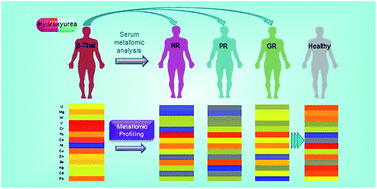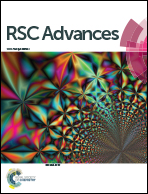Metallomic profiling to evaluate the response to drug treatment: hydroxyurea as a case study in β-thalassemia patients†
Abstract
β-Thalassemia is the most common genetic disorder and results in the defective synthesis of β-globin chain, followed by chronic anemia. Hydroxyurea (HU) is among the drugs that effectively enhance fetal hemoglobin (HbF) levels in β-thalassemia patients, hence reducing blood transfusion requirements and transfusion-related complications. The current study focuses on the serum metallomic profiling of 40 β-thalassemia patients before and after treatment with hydroxyurea. Forty-five healthy individuals served as controls. For the profiling, 19 elements were analyzed by inductively coupled plasma-mass spectrometry (ICP-MS). The results showed significant differences in 15 elements at a probability level of 0.05 with a fold-change >3 between the HU-treated and untreated groups. Of these elements, 8 showed the same levels in thalassemic patients after administration of HU as in healthy controls. These results suggest that treatment with HU not only improves Hb levels in β-thalassemia patients but also reduces biometal dysregulations, thus improving the management of β-thalassemia.



 Please wait while we load your content...
Please wait while we load your content...